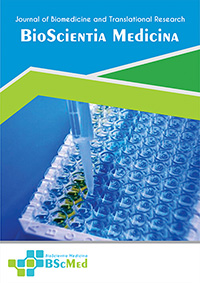Main Article Content
Abstract
Background: The role of vitamin D across the breast cancer spectrum remains complex and contested. Compelling preclinical antineoplastic mechanisms contrast with inconsistent clinical findings. Large randomized controlled trials (RCTs) show null effects for primary prevention, while observational studies often link higher vitamin D status at diagnosis with better prognosis. Key conflicts include this prevention-prognosis disconnect, debates over linear versus J-shaped prognostic dose-responses, and a "receptor-status paradox" where estrogen receptor-positive (ER-positive) disease shows prognostic links, but hormone receptor-negative (HR-negative)/triple-negative (TNBC) subtypes derive greater benefit (improved pathological complete response, pCR) from vitamin D intervention during neoadjuvant chemotherapy (NACT). This study systematically synthesizes evidence across these distinct clinical contexts.
Methods: Following PRISMA guidelines, we systematically reviewed PubMed, EMBASE, and CENTRAL (January 1st, 2014–September 2nd, 2025) for high-impact RCTs and large prospective cohort studies evaluating vitamin D supplementation or serum 25-hydroxyvitamin D (25(OH)D) levels regarding breast cancer incidence, prognosis (survival/recurrence), or pCR after NACT. Quality was assessed (Cochrane RoB 2; Newcastle-Ottawa Scale). Data were extracted dually. Findings were synthesized stratigraphically (prevention, prognosis, treatment). A random-effects meta-analysis pooled pCR data from NACT RCTs.
Results: Six high-quality studies (3 RCTs, 3 cohorts; N=31,026) were included. (1) Prevention: The VITAL RCT (N=25,871; mean baseline 25(OH)D 30.8 ng/mL) found no reduction in incident invasive breast cancer with 2000 IU/day vitamin D3 (HR 1.02, 95% CI 0.79–1.31). (2) Prognosis: Cohort studies (N=4,835) showed higher 25(OH)D linked to better OS (Adj HR T3 vs T1: 0.72). Complexity emerged: one study linked benefit specifically to ER-positive recurrence (Adj HR 0.87), while another reported a J-shaped curve for EFS, with worse outcomes at both low (≤52 nmol/L; Adj HR 1.63) and high (≥99 nmol/L; Adj HR 1.37) levels versus intermediate. (3) Treatment: Meta-analysis of two NACT RCTs (N=310) showed vitamin D supplementation significantly increased pCR rates (38.1% vs 22.6%; Pooled RR 1.69, 95% CI 1.21–2.36; P=0.002; I²=0%). Subgroup data strongly suggested greater benefit in HR-negative/TNBC and baseline-deficient patients.
Conclusion: Vitamin D supplementation appears ineffective for primary breast cancer prevention in replete populations. Its prognostic role is complex, suggesting an optimal 25(OH)D range (potentially ~30-40 ng/mL) and possible ER-specific hormonal modulation effects, though causality from observational data remains uncertain. Critically, vitamin D intervention during NACT significantly improves pCR, particularly in HR-negative/TNBC, likely via distinct chemosensitization/immunomodulatory mechanisms. This synthesis provides a framework for understanding these context-dependent roles, supporting vitamin D assessment and potentially adjunctive NACT supplementation, especially in deficient patients with aggressive subtypes, pending necessary validation in larger trials.
Keywords
Article Details
As our aim is to disseminate original research article, hence the publishing right is a necessary one. The publishing right is needed in order to reach the agreement between the author and publisher. As the journal is fully open access, the authors will sign an exclusive license agreement.
The authors have the right to:
- Share their article in the same ways permitted to third parties under the relevant user license.
- Retain copyright, patent, trademark and other intellectual property rights including research data.
- Proper attribution and credit for the published work.
For the open access article, the publisher is granted to the following right.
- The non-exclusive right to publish the article and grant right to others.
- For the published article, the publisher applied for the Creative Commons Attribution-NonCommercial-ShareAlike 4.0 International License.





